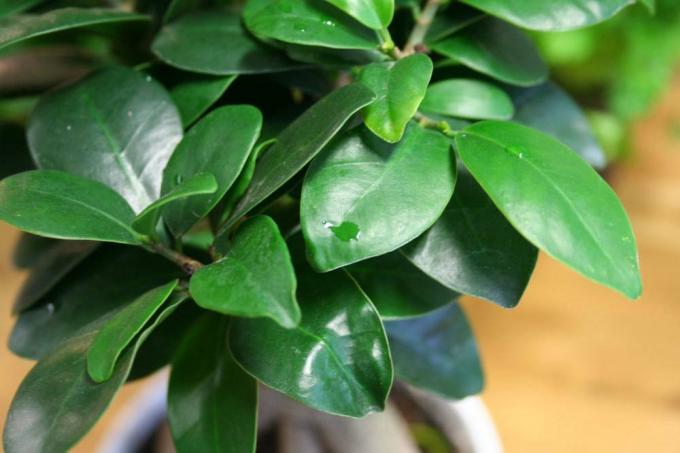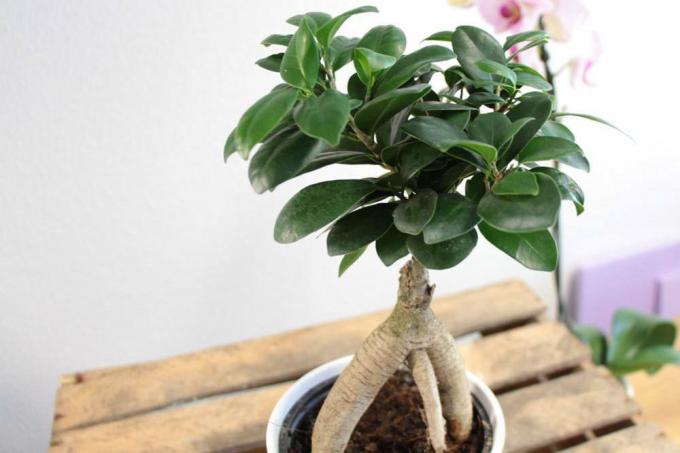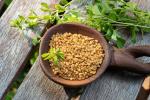
table of contents
- Wrong pouring
- Leaf loss if watered incorrectly
- causes
- Pour Ficus microcarpa ginseng properly
- Finger test
- summer
- winter
- spray
With the Ficus microcarpa ginseng there is one of the most famous types of plants, the Japanese art of bonsai. The Chinese fig is extremely easy to care for and cut resistant, which makes it ideal bonsai power. However, there is a problem which owners of the laurel-Fig is often a headache: the right amount of water when pouring. Pouring the Ficus microcarpa ginseng correctly is one of the most difficult aspects of care and requires a great deal of sensitivity.
Wrong pouring
Leaf loss if watered incorrectly
The Chinese fig is not that simple in terms of the amount of water it needs. Especially with bonsai trees, there can quickly be an excess or lack of moisture, as the planters are usually quite small. But even with specimens that are kept in the normal way, problems can quickly arise. If your Indian bay leaf is suddenly losing leaves, it could be caused by two things:
causes
Waterlogging
Check with a finger test and the coaster whether the roots are too wet. If these are permanently wet, the plant can no longer absorb nutrients through the roots and root rot can even occur. For this reason, it is important not to pour Ficus microcarpa ginseng over it, as root rot can quickly lead to the death of the entire plant. But drainage and a drainage hole aren't always enough if you're giving too much water. The only thing that can help is repotting and removing rotten roots and parts of plants.
Ball dryness
The dryness of the balls is the opposite of waterlogging, but can affect the Indian laurel in the same way. As the name suggests, a lack of water is the cause of this problem and can also be determined by finger testing. To do this, carefully insert your finger a few centimeters into the soil and if you do not come across moist soil, the dry ball is the reason for the leaf loss. To bring the plant back into shape, you need to submerge the entire root ball and then drip it into fresh substrate.
The right balance when watering is important with the Chinese fig. This not only protects the ficus from diseases, but also supports the growth and resistance that is necessary for the topiary of the tree.
tip: even the use of calcareous irrigation water can severely affect the plants, as they cannot tolerate the mineral in any form. If that is the case, you should only use stale or filtered tap water or rainwater so that the fig does not have to suffer from the lime.
Pour Ficus microcarpa ginseng properly
When watering a Ficus microcarpa ginseng, you have to pay attention to many points in order not to give too little or too much water. Since there is no really prescribed watering quantity or frequency for the classic or bonsai variant of the Chinese fig, you have to carefully approach this care step. The most important thing: the plant is watered only as needed, not according to routine. The reason for this are numerous factors that make the fig's water consumption different from day to day:
- Indoor and outdoor temperature
- humidity
- season
- Freshness of the substrate
- Air quality
- Exposure to sunlight
- age
- health status
Even the presence of other plants, people or pets can significantly change the water demand. This is why it is so important not to pour ficus microcarpa ginseng according to routine. As mentioned above, the quality and type of water is also crucial for the right amount of irrigation water. Since water that is too lime-rich prevents nutrient absorption in the long term, many owners have the feeling that they have to water more, which quickly leads to waterlogging. The following tips should be observed from now on when watering in order to properly water the Ficus microcarpa ginseng:
Finger test
It is very important that you only think about adding irrigation water when the substrate has dried slightly. The finger test is essential and helps you to determine whether it is necessary to pour or not. The surface is the first three to four centimeters of the substrate that should be tested. As described above, you simply stick your finger in the earth and feel when it starts to get wet. If you do not encounter moisture at all, the root ball is already in danger and it is essential to water it. If the soil is still slightly damp, you do not have to water it.
summer
In summer it is often the case that you are average every two days Have to administer irrigation water. Since it is much warmer, the Ficus microcarpa ginseng consumes a greater amount of moisture and therefore has to be watered more often. However, that doesn't mean you should overdo it. Check with a finger test how dry the substrate is and re-water. However, the two days are not a guarantee, but an empirical value that must be observed with the Chinese fig. Be careful never to let the Chinese fig dry out, especially in summer.
winter
In winter you have to be careful not to give too much water. This is particularly problematic if the room is too cold. Since irrigation water does not evaporate as quickly at cool temperatures, frequent additions of water can be used quickly Root rot to lead. You can also use the finger test here and if you have the feeling that the irrigation water does not evaporate quickly enough, you should check the winter quarters of the plant and water less. In many cases, however, it can help to place the pot on an insulating surface such as coconut mat, cork or styrofoam. However, you should never place the tree near a heater.
spray
In addition to the classic additions, it is advisable to spray the fig with room-warm, low-lime irrigation water throughout the year. The plant absorbs moisture from the air and can use it just as effectively for its functions. Simply use a normal spray bottle for this. However, if you use a bottle that has already been used for other products, you must first clean it thoroughly. Now spray the Ficus microcarpa ginseng in a regular rhythm. However, you should be careful to reduce the watering quantities carefully so as not to expose the plant to too much moisture.
Yes, watering a Chinese fig is not easy. But if you take your time and don't overdo it, you will get a better sense of when to water.

tip: It is particularly bad for the crop when the substrate is so dry that you can no longer penetrate the soil with your finger. In this case, you definitely need to dive and repot.





